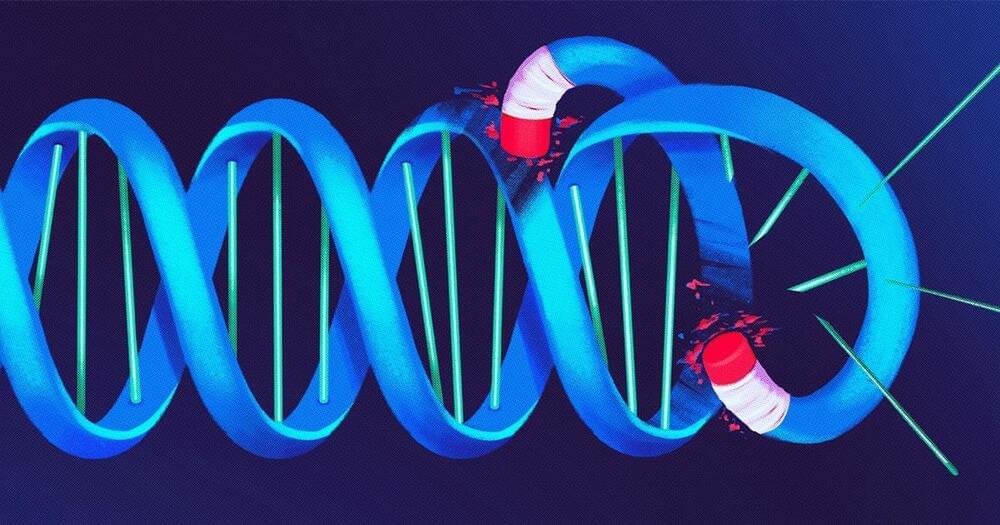In a recent study, scientists stained the DNA of this worm hatchling to hunt down segments of DNA that they’d seen deleted from its genome earlier in development. The deleted fragments (red) survive only in germline cells in the worm’s gonads.
To figure out what was going on, Delattre’s lab looked at the DNA of an adult worm. The researchers compared the genomes of M. belari’s germline cells — the specialized reproductive cells like sperm and eggs — with the genomes of the worm’s somatic (nonreproductive) cells. The somatic genomes were missing long strings of sequences present in germline genomes. Sometime between the embryo’s growth from seven cells to 32, huge chunks of DNA had vanished.
The scientists then watched nematode embryos develop under a microscope. As the cells grew and replicated their genomes, they broke 20 chromosomes down into fragments and then reassembled them into 40 miniature chromosomes. Most of the fragments rejoined in this new, smaller genome — but a substantial fraction were left out.
